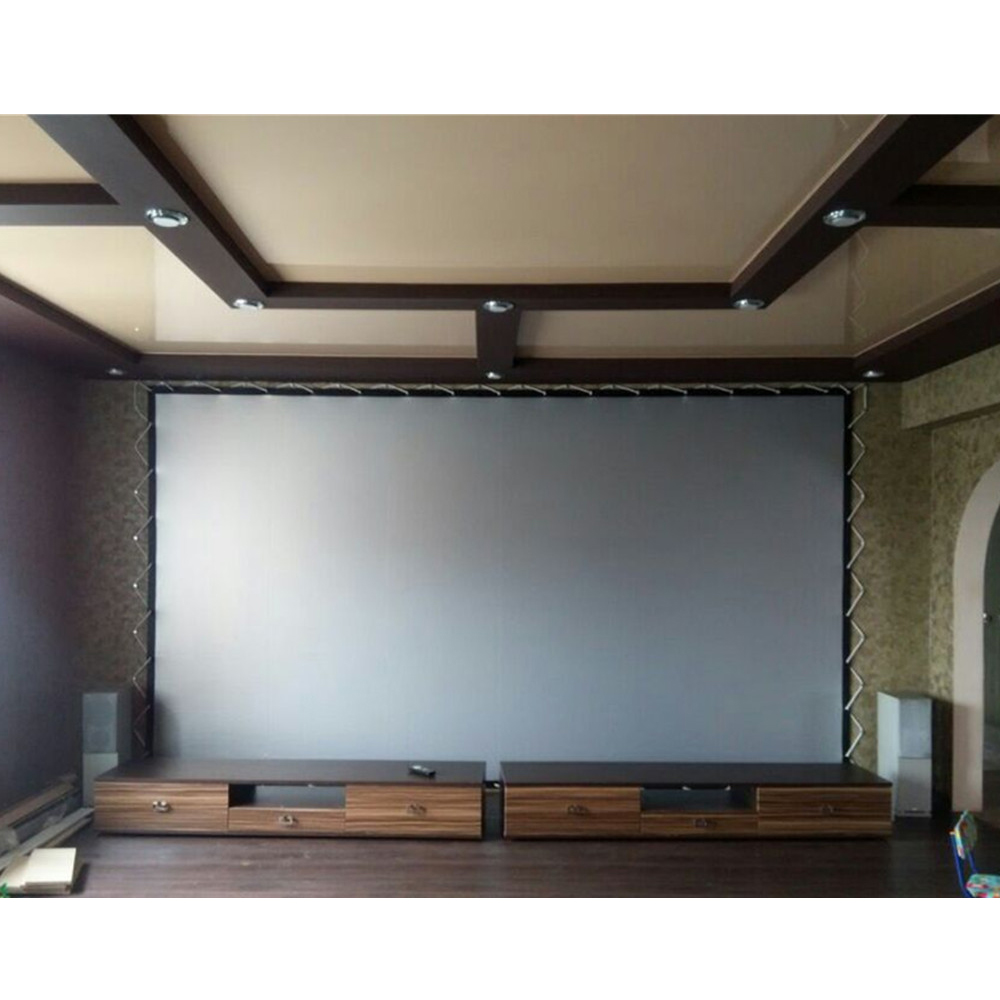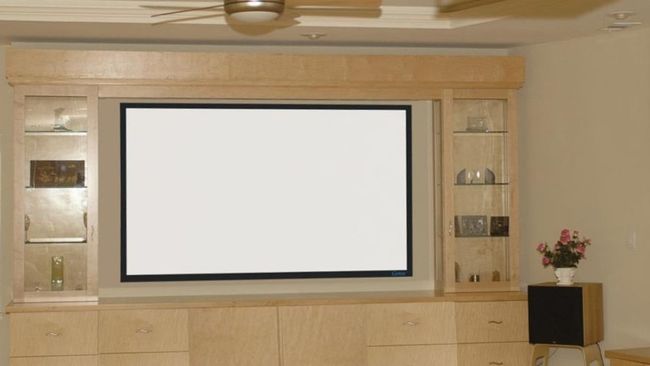

#Best projector screen material how to#
If you can hang a picture frame on a wall, then you already know how to install a fixed frame screen in your media room. This setup offers a very smooth and even projection surface for the lowest price, in part thanks to its simple construction.Īdditionally, from an installation point of view, it is easier to integrate.

A fixed screen is composed of an aluminum or wooden frame that very tightly holds the screen proper, which in turn is usually made of PVC. If you have the space available, it is always better to go for a fixed screen. That means they’re best for big home cinema or media rooms, and not suitable for small spaces. On the downside, if you want to enjoy a large image, then a big fixed screen takes up a lot of space and can’t be folded or moved out of the way. The biggest advantages of fixed frame screens is easy setup and simple usage. These screens arrive in many varieties and sizes. Standard surfaces offer acceptable image quality in dark rooms, but for better performance it may be wise to get a light rejecting screen in well-lit rooms. As such, they’re very even and consistent and do not need tab tensioning, unlike frameless retractable screens. We’ll then cover how to choose the best one for your room and projector.Īs their name states, fixed frame screens have a fixed form and with a frame surrounding the projection surface. Before continuing to read the rest of this article you may want to dive into light resistance and rejection technologies.īut even without specific technologies designed to enhance surfaces, what is it about a projection screen in general that makes it better than just using a readily-available white wall? Moreover, how do you choose the right screen without breaking the bank? Let's discuss the three main aspects of screens: material, size, and style. Notably, image contrast, resolution, and color reproduction suffer the most from using a surface not intended for projection.Īctually, we have an entire article dedicated to technological developments that have given us light rejecting surfaces and other advancements that promote superior image quality. Projecting onto a wall or just a white surface has a significant negative impact on image quality. Sometimes, after having invested in a top of the line projector, people forego a proper projection screen altogether.

However, a great projector is only one piece in a multi-element projection system, as the screen onto which you display makes a world of difference. If you care about enjoying your video content in the best quality possible, then you most likely already know that a projector is unbeatable for a truly cinematic experience.


 0 kommentar(er)
0 kommentar(er)
